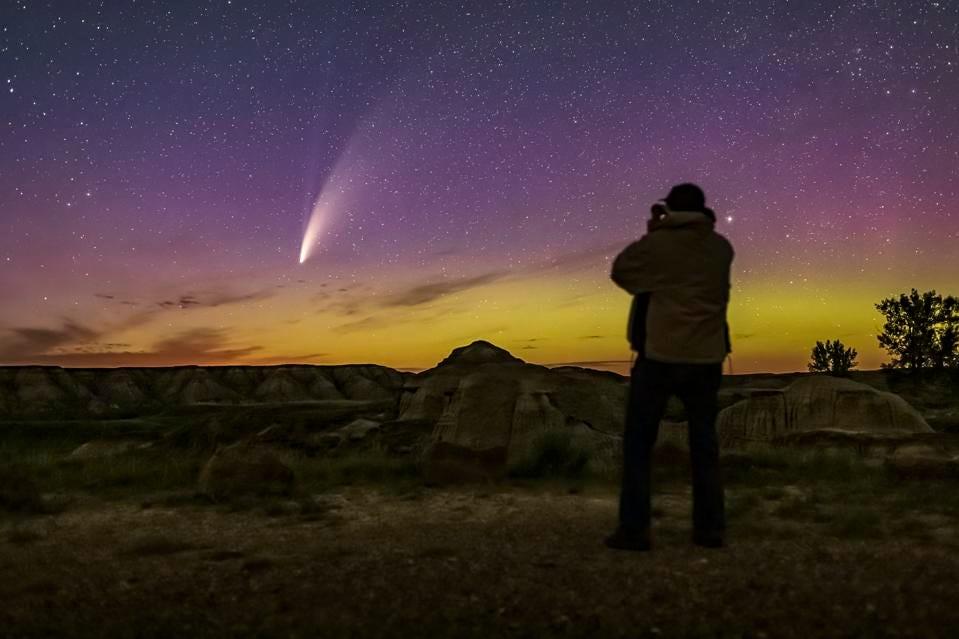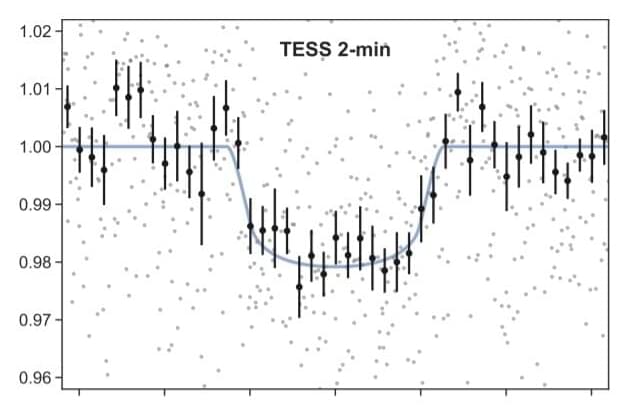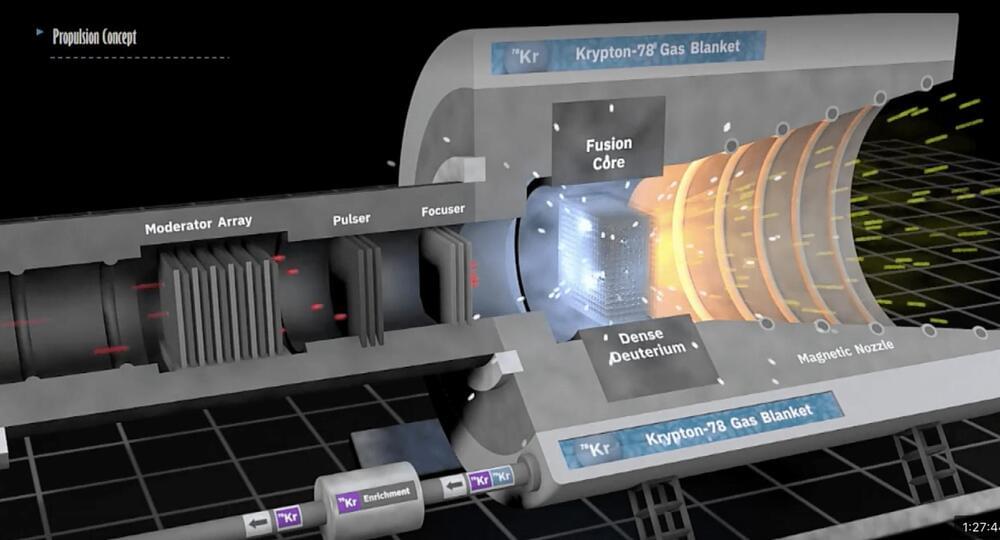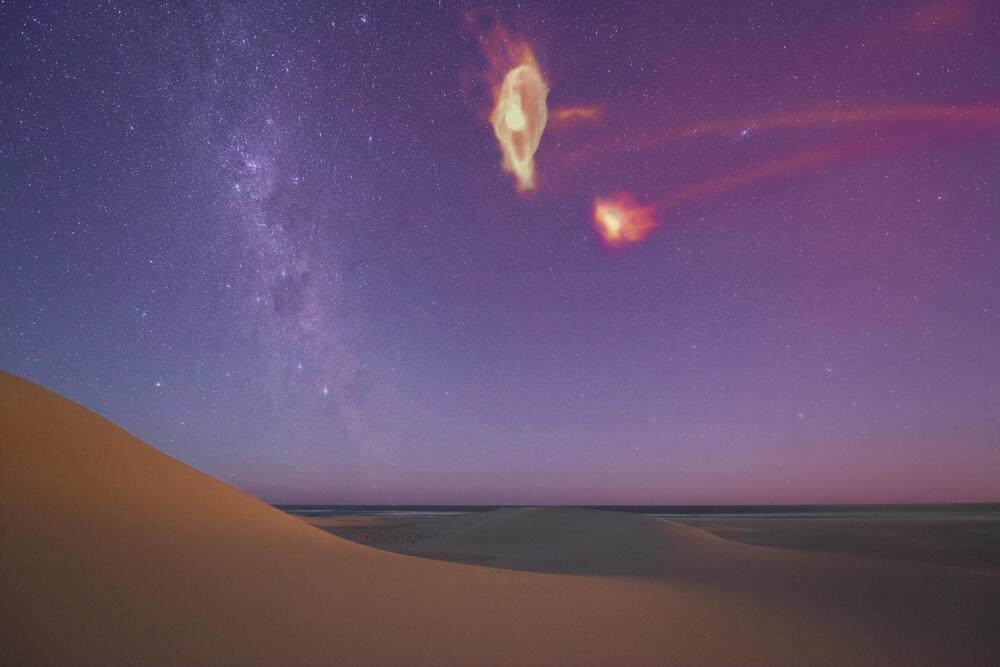As Neptune and Uranus could solve the mysteries of planet formation, we need to go back and study them in depth.
Sending a spacecraft to study Uranus and Neptune could give planetary scientists better clues about the formation of ice giants.


The ability to precisely control and change properties of a photon, including polarization, position in space, and arrival time, gave rise to a wide range of communication technologies we use today, including the Internet. The next generation of photonic technologies, such as photonic quantum networks and computers, will require even more control over the properties of a photon.
One of the hardest properties to change is a photon’s color, otherwise known as its frequency, because changing the frequency of a photon means changing its energy.
Today, most frequency shifters are either too inefficient, losing a lot of light in the conversion process, or they can’t convert light in the gigahertz range, which is where the most important frequencies for communications, computing, and other applications are found.
In 2012, astronomers announced a startling result: The had used Hubble to very carefully measure the motion of the Andromeda galaxy, and found that it appeared to heading very nearly directly toward the Milky Way at 100 kilometers per second. They predicted that in about 4 billion years the two galaxies would collide, and chaos would ensue.
In 2019, an update to the measurements indicated that Andromeda was sliding to the side a little bit more than previously thought, delaying the inevitable collision by about 600 million years.
But now new results have been published using updated data, and they imply that Andromeda’s sideways motion still higher yet. If true, it’s possible that Andromeda could miss the Milky Way entirely on this pass.
There are lots of potential uses for a Mars colony. While drinking water is a big one, just as important is creating rocket fuel out of hydrogen.

Have you seen C/2021 A1 (Leonard) —a.k.a. “Comet Leonard”—yet? Discovered on January 3, 2021 by Greg Leonard, a senior research specialist at Arizona’s Mount Lemmon Observatory, Comet Leonard is potentially going to become an object visible to binocular and even naked eyes. It’s predicted to reach around magnitude 4 or brighter in December 2021 (for the latest, follow it on Twitter).
It will get closest to the Earth to be super-bright on December 12, 2021, but by then it’s going to be fairly low in the sky. So your best chance is to get up early—about 90 minutes before sunrise—during early December and look east.
Arm yourself with either a small telescope or any pair of binoculars to maximize your chances.
NASA’s box-shaped space probe will launch aboard a SpaceX Falcon 9 rocket on Tuesday, November 23 from Vandenberg Space Force Base in California. Less than a year later it will hit its target.

Using NASA’s Transiting Exoplanets Survey Satellite (TESS), an international team of astronomers has detected a new sub-Neptune exoplanet orbiting an M dwarf star. The newly found extrasolar world, designated TOI-2406 b, is nearly three times larger than the Earth. The discovery is reported in a paper published July 29 on arXiv.org.
TESS is conducting a survey of about 200,000 of the brightest stars near the sun with the aim of finding transiting exoplanets. So far, it has identified over 4,400 candidate exoplanets (TESS Objects of Interest, or TOI), of which 144 have been confirmed so far.
Recently, a team of astronomers led by Robert Wells of the University of Bern in Switzerland confirmed a new TESS planet around the star known as TOI-2406 (or TIC 212957629). TESS observed TOI-2406 in 2018 and 2020, which resulted in the detection of a transit signal in the light curve of this object. The planetary nature of this signal was confirmed by follow-up photometric and spectroscopic observations using various ground-based telescopes.
NASA will launch a mission to crash into an asteroid (on purpose) overnight tonight and you can watch it lift off live online.
The agency’s Double Asteroid Redirection Test (DART) mission will travel millions of miles out into the solar stem to smash into an asteroid, altering its orbit around a larger space rock to practice in the event of a rogue Earth-bound asteroid. The mission is set to lift off from Space Launch Complex-4 at Vandenberg Space Force Base in California early Wednesday, Nov. 24, at 1:20 a.m. EST (10:20 p.m. PST on Nov. 23/0620 GMT).

O,.o! Circa 2018
We can produce very little antimatter and what we make is very difficult to store. These have been huge obstacles that have made antimatter propulsion many trillions of times beyond technological capabilities.
Positron Dynamics and Ryan Weed get around these issues by using isotopes of Krypton or sodium which naturally produce positrons (anti-electrons). They can use tiny amounts of Krypton isotopes to generation 100 billion to many trillions of positrons. They can also breed more of Krypton 79 isotopes by exposing Krypton 78 to neutrons.
Using a NASA NIAC study they have worked out more details and produced renderings of what the systems will look like.

Our galaxy is not alone. Swirling around the Milky Way are several smaller, dwarf galaxies—the biggest of which are the Small and Large Magellanic Clouds, visible in the night sky of the Southern Hemisphere.
During their dance around the Milky Way over billions of years, the Magellanic Clouds’ gravity has ripped from each of them an enormous arc of gas—the Magellanic Stream. The stream helps tell the history of how the Milky Way and its closest galaxies came to be and what their future looks like.
New astronomical models developed by scientists at the University of Wisconsin–Madison and the Space Telescope Science Institute recreate the birth of the Magellanic Stream over the last 3.5 billion years. Using the latest data on the structure of the gas, the researchers discovered that the stream may be five times closer to Earth than previously thought.